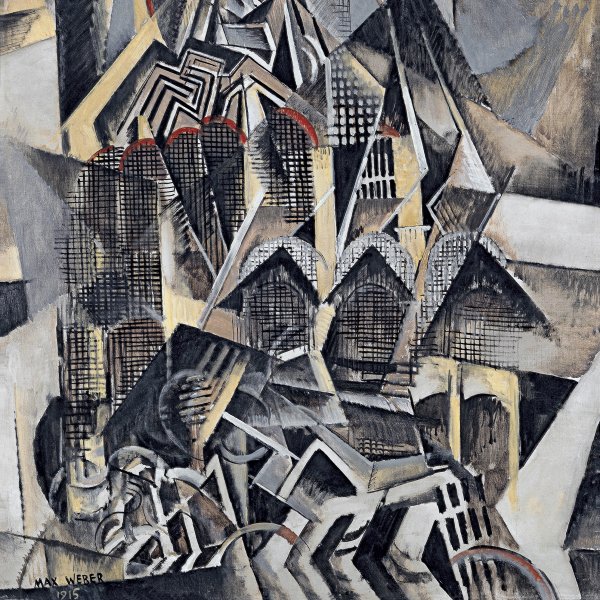Bach Preludes et Fugues
Marsden Hartley was one of the pioneers of American Modernism. In 1909 his work was shown for the first time at 291, the gallery belonging to Alfred Stieglitz, who brought him into contact with the New York avant-garde circles and financed his European travels from 1912 onwards. In the Old Continent Hartley struck up a friendship with Gertrude Stein and discovered Cubism, as well as German Expressionism, which captivated him for its manner of expressing emotions. From the assimilation of these two trends he shaped what would be his personal style, which fuses the spatial structuring of synthetic Cubism with an expressionistic use of colour.
Bach Preludes et Fuges is one of the first works Hartley produced in the French capital and it denotes the influence of Cézanne’s painting, which he discovered on arriving in Paris, and the Cubism of Picasso — particularly the Architect’s Table of 1912, which hung in the Steins’ sitting room. The references to music in this painting are related both to musical compositions by Braque and to the mystic ideas of Kandinsky, particularly his theories on synesthesia. In addition to his studying of Kandinsky’s writings, particularly Concerning the Spiritual in Art, Townsend Ludington also points out the significance of Hartley’s discovery of the works of Henri Bergson and the mystics Eckhart, Tauler, Suso and Ruysbroeck in giving shape to his thoughts.
Lest there should be any doubt about his intention to create a visual language capable of eliciting emotions similar to those aroused by music, Hartley wrote on the lower part of the composition “BACH / PRELUDES ET FUGUES.” In his monograph on the painter, Bruce Robertson speaks of the universally recognised relationship between music and painting at the time and mentions another two works devoted to Bach also executed in 1912, Hommage à J.S. Bach by Georges Braque and Coloured Composition (Homage to Johann Sebastian Bach) by August Macke. In December 1912 Hartley wrote to Stieglitz that in Paris he had met a painter from Munich who was also working on the musical principles of painting and who had praised his work as “the first to express pure mysticism in this modern tendency.” As Gail Levin points out, it is not difficult to imagine that this was August Macke, who paid a visit to his friend Robert Delaunay in Paris in October 1912.
Hartley clearly defines the future path his painting was to follow in the aforementioned letter to Stieglitz: “I am rapidly gaining ground in this variety of expression and I find it to be closest to my own temperament and ideals. It is not like anything here. It is not like Picasso — it is not like Kandinsky, not like any ‘Cubism’. It is what I call for want of a better name subliminal or cosmic Cubism. It will surprise you. I did these things before I went to London as a result of spiritual illumination and I am convinced that it is my real and true utterance. It combines a varied sense of form with my own sense of color which I believe has never needed stimulation.”
Paloma Alarcó









